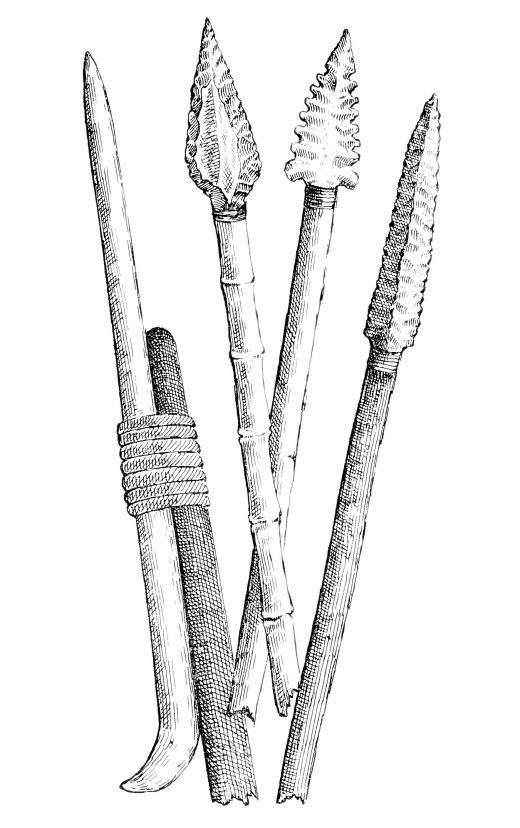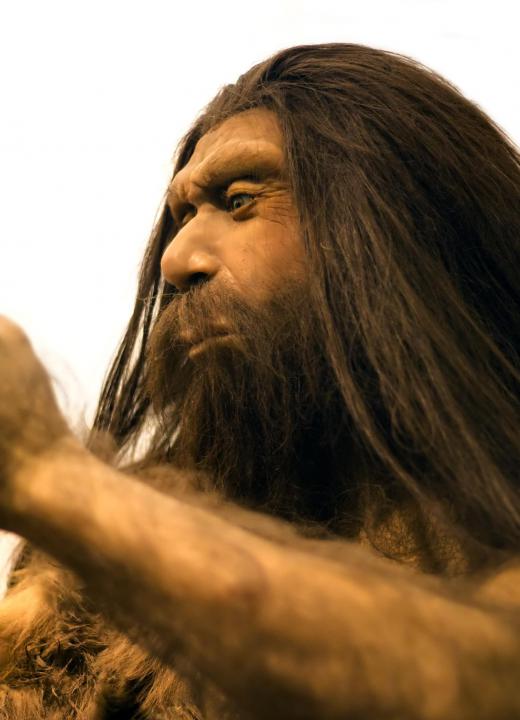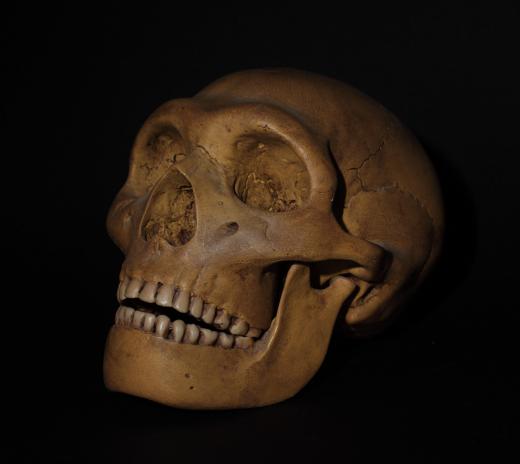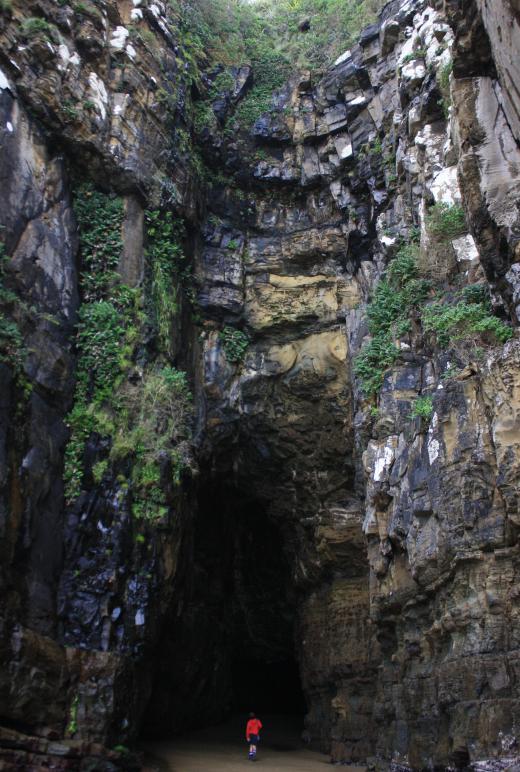What is the Paleolithic Era?
 Michael Anissimov
Michael Anissimov
The Paleolithic era, meaning "Old Stone Age" is a very long period of human prehistory, extending from the first tool-using hominids at least 2.6 million years ago, all the way up until around 10,000 BP. On the basis of tools and other artifacts, the era is subdivided into Lower (2.6 million years ago – 300,000 years ago), Middle (300,000 years ago – 30,000 years ago) and Upper (50,000 years ago – 10,000 years ago); there is some overlap in the time periods as the transitions took place at different times in different places. The end of the era was marked by a general warming of the Earth’s climate, causing continental glaciers to recede. This seems to have led to the development of agriculture, resulting in settled communities and an end to the nomadic, hunter-gatherer lifestyle that characterized this period.
Humans come from an evolutionary line that split from chimpanzees about 6 million years ago. The Paleolithic era saw the emergence of many early species of Homo — collectively known as hominids — the immediate ancestors of modern humans. This period of prehistory was a time of slow population expansion, migration, evolution, and the development of stone tools. Since it contains no written records, there is a lot of uncertainty as to the details of how these early hominids lived, but archaeologists have been able to piece together quite a lot of information about Paleolithic technology, migration, society and art.
Tools and Technology

Development of technology during the Paleolithic was slow, especially prior to the evolution of modern humans in eastern Africa around 250,000 years ago, but it was the fashioning of stone tools during this era that gave rise to the term “stone age.” The oldest prehistoric tools date from the beginning of the era until around 1.4 million - 600,000 years ago, a part of the Lower Paleolithic known as the Oldowan period. The tools consist of crude choppers, cleavers, scrapers and awls, with only one side of the tool worked into an edge. This tool-making period gave way to the Acheulian tool industry over a period of almost a million years, at different times in different places. Acheulian tools consist of distinctive oval and pear-shaped handaxes created by chopping both edges and reworking to achieve a sharp edge.

The transition into the Middle Paleolithic was marked by the appearance of the first composite tools, such as spears consisting of sharpened stones attached to wooden shafts. Harpoons, used for spearing fish may also have been used. It was during this period that the use of fire became common, although it may first have been employed during the lower Paleolithic.

During the Upper Paleolithic period, there was a great diversification in tool making, with a wide variety of relatively specialized tools appearing. For example, new hunting implements, such as the bow and arrow and the bolas seem to have been invented in this period. New materials, such as bone, were also used. This period saw the emergence of the earliest works of art, in the form of cave paintings and carved stones, along with the required pigments and tools.
Expansion and Migration

Population densities during the Paleolithic era were low: around one human per square mile. The total population of hominids probably never exceeded one million until near the end of the era, by which time all species of Homo except for modern humans — Homo sapiens — had become extinct. The global population is thought to have been around 5 million at this point, and the range was across every continent besides Antarctica.

Around 1.8 million years ago (mya), some hominids tentatively began to colonize areas just outside Africa, such as modern-day Israel. Around 1.4 mya, Acheulian tool users, in the form of Homo erectus, left Africa to colonize Asia, where numerous artifacts have been found, particularly in China. Hominids first arrived in Europe around 1.2 million years ago. About 250,000 years ago, modern humans evolved in Africa, and beginning around 80,000 years ago, quickly spread across Eurasia, replacing other species of Homo that came before them. By about 10,000 years ago, humans had inhabited every part of the Earth except Antarctica and a few isolated islands such as New Zealand and Hawaii.
Society

What is known about Paleolithic societies is based partly on archeological and other scientific evidence and partly on studies of “stone age” tribes that survived into relatively modern times. The Paleolithic era is defined as pre-agricultural and its societies would have been of the “hunter-gatherer” type, featuring groups, or tribes, of perhaps 20-50 individuals. It is thought that the hunting of animals for meat was carried out primarily by men, while women were mainly responsible for gathering various types of plant-based foods, such as fruit, nuts and edible stems and roots. It has been estimated that plants made up about 70% of the diet and meat only about 30%, making women the main providers of food. It is possible that because of this, women at this time may have played a greater role in society than in post-Paleolithic times.
The hunter-gatherer lifestyle imposed a nomadic existence, with people having to move around frequently because of seasonal fluctuations in the availability of plant and animal food. This made permanent settlements impossible and limited the amount of material goods that individuals or families could accumulate. It seems likely, therefore, that these societies did not have the marked divisions based on wealth and social status that appeared with the establishment of fixed communities based on an agricultural way of life. Tribes may have had leaders, but there was probably little in the way of a social hierarchy.
Art
Many paintings and carvings have been preserved from the Upper Paleolithic period. Paintings were made using red and yellow pigments from iron compounds found in rocks. It seems that these were ground into powder and mixed with saliva to form a kind of paint that was then applied to suitable rock surfaces in caves. These paintings generally depict animals that early humans would have hunted for food, as well as explicit hunting scenes. There are also some representations of half-human, half-animal creatures that are thought to be related to religious or magical beliefs.
Numerous carvings from this period have been found. They are made from a variety of materials, including stone, bone and horn. While there are many carvings of animals, a lot of interest has focused on carvings of female figures. These are sometimes called “Venus figures” and many researchers have speculated that they may be fertility symbols, or that they may represent a “mother goddess.” Others have suggested that they may simply have been a form of stone-age pornography.
AS FEATURED ON:
AS FEATURED ON:
















Discussion Comments
This really didn't help me a lot. although they gave interesting facts they should include more into this article.
I had homework on early humans, but I didn't remember when the paleolithic era started and ended. Thanks! Although it might nice to state periods of time in how many millions of years ago. Thanks again!
Quick fun fact -- the manufacture of axes, stone artifacts, etc. in the paleolithic age is called acheulean.
Now the next time somebody brings up the paleolithic age, you can totally blow their mind with your detailed knowledge!
I really liked this article -- I think that so often we end up thinking of the paleolithic age in stone age stereotypes.
But this article really gave me a lot of insight into the age -- I mean, I had no idea that paleolithic tools, shelters, etc. were so advanced.
Thanks for cluing me in!
I found this article when I was doing research for a paper on the paleolithic age, and I have to say, this is an awesome jumping off point for someone who needs an overview on what the age was all about.
The only other thing that I wish was included was more on the paleolithic period art. I know that it's hard to include everything in a short article, but a little mention might be nice.
Really well done article though!
Post your comments